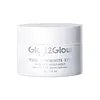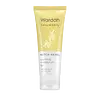What's inside
What's inside
 Key Ingredients
Key Ingredients

 Benefits
Benefits

 Concerns
Concerns

 Ingredients Side-by-side
Ingredients Side-by-side

Water
Skin ConditioningButylene Glycol
HumectantGlycerin
HumectantCitrus Junos Fruit Extract
Skin Conditioning3-O-Ethyl Ascorbic Acid
Skin ConditioningCaprylic/Capric Triglyceride
MaskingCentella Asiatica Extract
CleansingPanthenol
Skin ConditioningBetaine
HumectantIsopropyl Palmitate
EmollientAllantoin
Skin ConditioningGlycereth-26
HumectantAmmonium Acryloyldimethyltaurate/Vp Copolymer
Phenylethyl Resorcinol
Antioxidant1,2-Hexanediol
Skin ConditioningHydroxyacetophenone
AntioxidantPolyacrylate-13
Butyrospermum Parkii Butter
Skin ConditioningDimethyl Isosorbide
SolventSodium Hyaluronate
HumectantXanthan Gum
EmulsifyingCeramide Ns
Skin ConditioningCeramide AP
Skin ConditioningHydroxypinacolone Retinoate
Skin ConditioningPropylene Glycol
HumectantCetearyl Alcohol
EmollientDimethicone
EmollientPolysorbate 20
EmulsifyingCeramide NP
Skin ConditioningTetrapeptide-1
Skin ConditioningNonapeptide-1
Skin ConditioningPolyisobutene
Pentylene Glycol
Skin ConditioningSorbitan Isostearate
EmulsifyingAroma
Rosa Hybrid Flower Extract
Skin ConditioningWater, Butylene Glycol, Glycerin, Citrus Junos Fruit Extract, 3-O-Ethyl Ascorbic Acid, Caprylic/Capric Triglyceride, Centella Asiatica Extract, Panthenol, Betaine, Isopropyl Palmitate, Allantoin, Glycereth-26, Ammonium Acryloyldimethyltaurate/Vp Copolymer, Phenylethyl Resorcinol, 1,2-Hexanediol, Hydroxyacetophenone, Polyacrylate-13, Butyrospermum Parkii Butter, Dimethyl Isosorbide, Sodium Hyaluronate, Xanthan Gum, Ceramide Ns, Ceramide AP, Hydroxypinacolone Retinoate, Propylene Glycol, Cetearyl Alcohol, Dimethicone, Polysorbate 20, Ceramide NP, Tetrapeptide-1, Nonapeptide-1, Polyisobutene, Pentylene Glycol, Sorbitan Isostearate, Aroma, Rosa Hybrid Flower Extract
Water
Skin ConditioningCaprylic/Capric Triglyceride
MaskingGlycerin
HumectantButylene Glycol
HumectantSqualane
EmollientTetramethylcyclotetrasiloxane
Benzyl Alcohol
PerfumingCyclopentasiloxane
EmollientDimethicone
EmollientPanthenol
Skin ConditioningTriethanolamine
BufferingAcrylates/Acrylamide Copolymer
MoisturisingParaffinum Liquidum
EmollientEthylhexylglycerin
Skin ConditioningAllantoin
Skin ConditioningCarbomer
Emulsion StabilisingParfum
MaskingBHT
AntioxidantTocopheryl Acetate
AntioxidantChamomilla Recutita Flower Extract
MaskingPolysorbate 85
EmulsifyingPhenoxyethanol
PreservativeHamamelis Virginiana Leaf Extract
Skin ConditioningPEG-40 Hydrogenated Castor Oil
EmulsifyingTrideceth-9
EmulsifyingTocopherol
AntioxidantPolysorbate 20
EmulsifyingCI 42090
Cosmetic ColorantCI 19140
Cosmetic ColorantWater, Caprylic/Capric Triglyceride, Glycerin, Butylene Glycol, Squalane, Tetramethylcyclotetrasiloxane, Benzyl Alcohol, Cyclopentasiloxane, Dimethicone, Panthenol, Triethanolamine, Acrylates/Acrylamide Copolymer, Paraffinum Liquidum, Ethylhexylglycerin, Allantoin, Carbomer, Parfum, BHT, Tocopheryl Acetate, Chamomilla Recutita Flower Extract, Polysorbate 85, Phenoxyethanol, Hamamelis Virginiana Leaf Extract, PEG-40 Hydrogenated Castor Oil, Trideceth-9, Tocopherol, Polysorbate 20, CI 42090, CI 19140
Ingredients Explained
These ingredients are found in both products.
Ingredients higher up in an ingredient list are typically present in a larger amount.
Allantoin is a soothing ingredient known for its protective and moisturizingg properties. Because of this, it is often added to products with strong active ingredients.
Studies show higher concentrations of this ingredient can promote wound healing.
Though it can be derived from the comfrey plant, allantoin is produced synthetically for cosmetic products to ensure purity.
Learn more about AllantoinButylene Glycol (or BG) is used within cosmetic products for a few different reasons:
Overall, Butylene Glycol is a safe and well-rounded ingredient that works well with other ingredients.
Though this ingredient works well with most skin types, some people with sensitive skin may experience a reaction such as allergic rashes, closed comedones, or itchiness.
Learn more about Butylene GlycolThis ingredient is an emollient, solvent, and texture enhancer. It is considered a skin-softener by helping the skin prevent moisture loss.
It helps thicken a product's formula and makes it easier to spread by dissolving clumping compounds.
Caprylic Triglyceride is made by combining glycerin with coconut oil, forming a clear liquid.
While there is an assumption Caprylic Triglyceride can clog pores due to it being derived from coconut oil, there is no research supporting this.
Learn more about Caprylic/Capric TriglycerideDimethicone is a type of synthetic silicone created from natural materials such as quartz.
What it does:
Dimethicone comes in different viscosities:
Depending on the viscosity, dimethicone has different properties.
Ingredients lists don't always show which type is used, so we recommend reaching out to the brand if you have questions about the viscosity.
This ingredient is unlikely to cause irritation because it does not get absorbed into skin. However, people with silicone allergies should be careful about using this ingredient.
Note: Dimethicone may contribute to pilling. This is because it is not oil or water soluble, so pilling may occur when layered with products. When mixed with heavy oils in a formula, the outcome is also quite greasy.
Learn more about DimethiconeGlycerin is already naturally found in your skin. It helps moisturize and protect your skin.
A study from 2016 found glycerin to be more effective as a humectant than AHAs and hyaluronic acid.
As a humectant, it helps the skin stay hydrated by pulling moisture to your skin. The low molecular weight of glycerin allows it to pull moisture into the deeper layers of your skin.
Hydrated skin improves your skin barrier; Your skin barrier helps protect against irritants and bacteria.
Glycerin has also been found to have antimicrobial and antiviral properties. Due to these properties, glycerin is often used in wound and burn treatments.
In cosmetics, glycerin is usually derived from plants such as soybean or palm. However, it can also be sourced from animals, such as tallow or animal fat.
This ingredient is organic, colorless, odorless, and non-toxic.
Glycerin is the name for this ingredient in American English. British English uses Glycerol/Glycerine.
Learn more about GlycerinPanthenol is a common ingredient that helps hydrate and soothe the skin. It is found naturally in our skin and hair.
There are two forms of panthenol: D and L.
D-panthenol is also known as dexpanthenol. Most cosmetics use dexpanthenol or a mixture of D and L-panthenol.
Panthenol is famous due to its ability to go deeper into the skin's layers. Using this ingredient has numerous pros (and no cons):
Like hyaluronic acid, panthenol is a humectant. Humectants are able to bind and hold large amounts of water to keep skin hydrated.
This ingredient works well for wound healing. It works by increasing tissue in the wound and helps close open wounds.
Once oxidized, panthenol converts to pantothenic acid. Panthothenic acid is found in all living cells.
This ingredient is also referred to as pro-vitamin B5.
Learn more about PanthenolPolysorbate 20 is made by combining ethoxylation of sorbitan, ethylene oxide, and lauric acid. It is a mild cleansing agent, surfactant, and emulsifier.
As a surfactant, it helps collect dirt and oils for washing. Emulsifiers prevent oils and water from separating.
Polysorbate 20 also adds scent to a product. Since it is made using sorbitol, it has a sweet scent. Sorbitol can also be found in fruits such as apples and peaches.
The lauric acid used to create Polysorbate 20 is often derived from coconuts.
Polysorbate 20 may not be fungal acne safe.
Learn more about Polysorbate 20Water. It's the most common cosmetic ingredient of all. You'll usually see it at the top of ingredient lists, meaning that it makes up the largest part of the product.
So why is it so popular? Water most often acts as a solvent - this means that it helps dissolve other ingredients into the formulation.
You'll also recognize water as that liquid we all need to stay alive. If you see this, drink a glass of water. Stay hydrated!
Learn more about Water